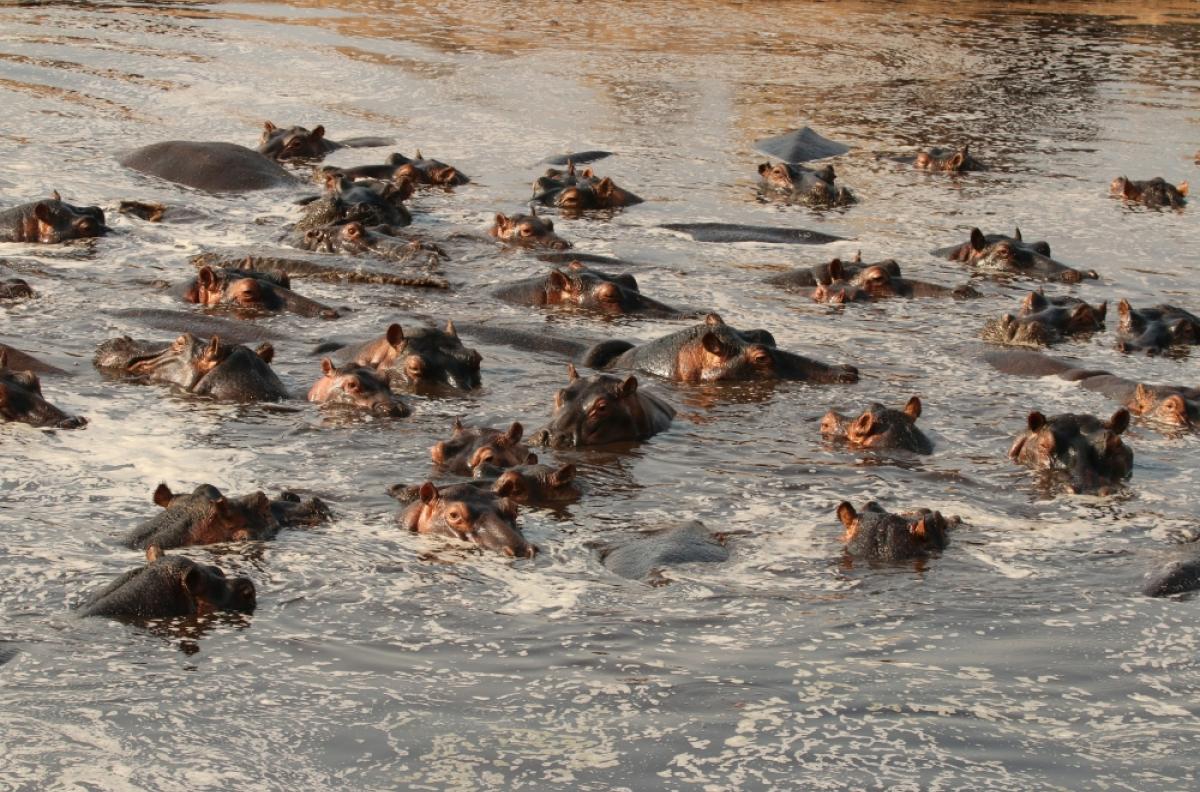
A bloat of hippos takes refuge in a remaining pool along the Great Ruaha River during the dry season. Photo Credit: Keenan Stears
Hippopotamus aren’t the first thing that come to mind when considering epidemiology and disease ecology. And yet these amphibious megafauna offered UC Santa Barbara ecologist Keenan Stears a window into the progression of an anthrax outbreak that struck Ruaha National Park, Tanzania, in the dry season of 2017.
Through surveys and GPS monitoring, Stears and his colleagues, Wendy Turner, Doug McCauley and Melissa Schmitt, revealed that reduced dry-season flows in the Great Ruaha River indirectly spread the disease by affecting hippo movement. The results, which appear in the journal Ecosphere, present a unique perspective on disease ecology and illustrate how anthropogenic changes can impact wildlife and human health.